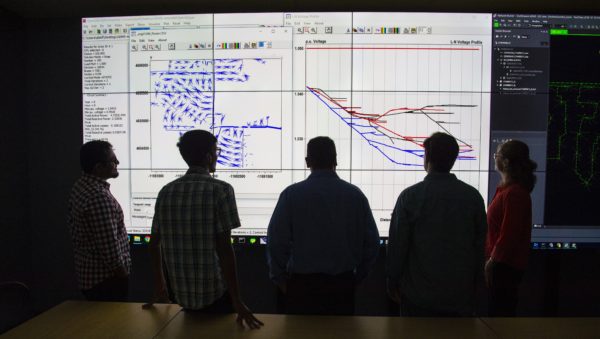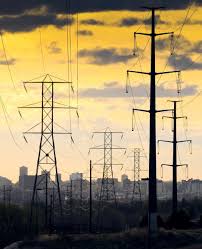The National Renewable Energy Laboratory (NREL) released findings from it five-year North American Renewable Integration Study (NARIS), which aims to inform grid planners, utilities, industry, policymakers, and other stakeholders about challenges and opportunities for continental system integration of large amounts of wind, solar, and hydropower to support a low-carbon future grid.
The study looked at a range of future scenarios and considered potential impacts on costs, emissions, resource adequacy, and specific technologies. The analysis focused in particular on the potential role of cooperation across North America and between regions within each country, and how transmission can support sharing of supply and demand diversity across the continent.
NREL released the report on the U.S. perspective in coordination with the U.S. Department of Energy, and a companion report describing a Canadian perspective in coordination with Natural Resources Canada.Results show that a future low-carbon North American grid can be achieved through multiple pathways that can balance supply and demand using a variety of flexible resources. The study also shows that increasing electricity trade and expanding transmission could have significant benefits, highlighting opportunities for a coordinated, low-carbon continental grid.
Key findings
NREL said that four key findings emerged from the analysis.
Finding 1: Multiple Pathways Can Lead to 80% Power-Sector Carbon Reduction Continent-Wide by 2050. Steeper cost reduction of wind and solar technologies can lead to a faster and less costly transition, and carbon targets can still be achieved with conservative wind and solar cost assumptions. When it comes to total system costs of achieving 80% power-sector emissions reductions, wind and solar cost trajectories have a more significant impact than carbon policy assumptions.

NREL/Dennis Schroeder
Finding 2: The Future Low-Carbon Power System Can Balance Supply and Demand in a Wide Range of Future Conditions. For each core NARIS scenario, NREL estimated the number of hours in a year where supply would not be expected to meet demand in a region, as well as shortages that may occur due to generator or transmission outages. For both the United States and Canada, these metrics compare favorably with the North American Energy Reliability Corporation’s projections for the contemporary grid, meaning the scenarios analyzed in NARIS would not fundamentally impact the power system’s ability to balance supply and demand.
The report said that in the U.S., between 1,200 and 2,000 gigawatts of renewable energy can be deployed to produce 70%–80% of U.S. electricity by 2050 while meeting planning reserve requirements. Thermal generation (nuclear, gas, and coal) was found to contribute significantly to the future power system’s ability to balance supply and demand in all scenarios, even when most of the energy generation comes from wind and solar. Storage can also help provide capacity to the system, the report said.
In Canada, hydropower, gas, and wind technologies were found to contribute most to the future system’s ability to balance supply and demand. Thermal generation would provide 5%–10% of energy in all scenarios in 2050, but still would contribute more than a quarter of winter planning reserves in most scenarios.

However, existing market structures may not support these generators operating in this manner, the report said. Some of this contribution from thermal generation could be replaced by new hydropower or storage. Hydropower would continue to provide around half of Canadian planning reserve needs by 2050; hydropower expansion could potentially contribute more, especially in a future with higher electricity demand.
Finding 3: Interregional and International Cooperation Can Provide Significant Net System Benefits Through 2050. Allowing international transmission expansion was found to provide $10 billion to $30 billion (based on 2018 dollars) of net value to the continental system between 2020 and 2050 in all but the business-as-usual case—the most conservative of the core scenarios.
Expanding transmission between regions of a country would provide $60 billion to $180 billion in net system benefits. Although these values are less than 4% of the total $5 trillion to $8 trillion total system costs (which include all capital and operating generation and transmission system costs), transmission was found to play an important role in minimizing costs.
NARIS showed significant value in expanding transmission across North America to support sharing of supply and demand diversity. These values are estimated by comparing the total system cost in each core scenario in model runs with and without allowing additional transmission expansion (either interregional or international).
Finding 4: Operational Flexibility Comes From Transmission, Storage, and Flexible Operation of All Generator Types. The results showed the future low-carbon power system will benefit from many different forms of operational flexibility. In the United States, this included flexible operation of natural gas and hydropower, curtailment of wind and solar generation, and storage (mostly pumped storage hydropower). International imports, enabled by transmission build outs, also help to balance the grid.

Image: Wikimedia Commons
In Canada, hydropower, wind, solar, and thermal generation were found to be key sources of flexibility. On days when Canada has high energy demand but lower wind energy output, Canada would import electricity from the United States. For days with higher Canadian wind output, the Canadian grid would export electricity to the United States, even when electricity demand peaks in both countries in the evening.
Hydropower would provide a zero-carbon source of energy, capacity, and flexibility to the grid. In comparing similar scenarios with and without the ability to adjust power output from U.S. and Canadian hydropower generators, annual system costs were found to be $2.3 billion higher without this flexibility.
Future research
Follow-on work could focus on studying the stability aspect of power system reliability, analyzing new scenarios that reflect today’s emissions reduction goals as well as technology costs, understanding the impact of different market structures on building new transmission and generation, and refining how electricity demand patterns and sources of flexibility are modeled under future widespread electrification.
This content is protected by copyright and may not be reused. If you want to cooperate with us and would like to reuse some of our content, please contact: editors@pv-magazine.com.









By submitting this form you agree to pv magazine using your data for the purposes of publishing your comment.
Your personal data will only be disclosed or otherwise transmitted to third parties for the purposes of spam filtering or if this is necessary for technical maintenance of the website. Any other transfer to third parties will not take place unless this is justified on the basis of applicable data protection regulations or if pv magazine is legally obliged to do so.
You may revoke this consent at any time with effect for the future, in which case your personal data will be deleted immediately. Otherwise, your data will be deleted if pv magazine has processed your request or the purpose of data storage is fulfilled.
Further information on data privacy can be found in our Data Protection Policy.